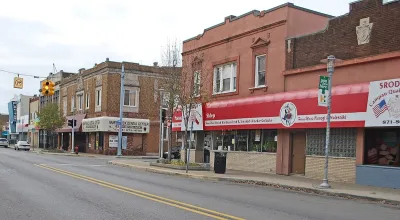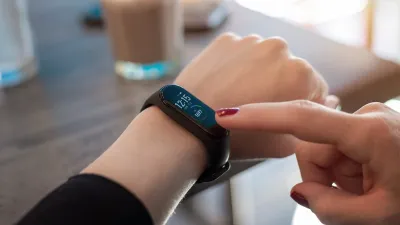A study reveals that the density of city blocks is a significant factor in communities’ walkability and, subsequently, improved public health outcomes for residents.

New research affirms the connection between walkable communities and improved health outcomes for residents, reports Emilio Perez Ibarguen in Great Lakes Echo.
Researchers from Michigan State University wanted to understand the more specific factors that impact public health to better inform policymakers. Of the four factors that typically define walkability — size of blocks, proximity to transit stops, variety of business types, and variety of zoning types — “The density of street intersections – corresponding closely to the size of blocks in the area – had the greatest impact on obesity.”
The study also found that factors unrelated to urban design, such as socioeconomic status and race, had more significant impacts on health than walkability.
The article includes information about Michigan cities that are working to improve their walkability and make their streets safer for pedestrians. The small Detroit enclave of Hamtramck, population 28,400, is the most walkable in the state. While its small size is an advantage, the town has also taken actions such as allowing mixed-use buildings. But a lack of transit connectivity to bigger cities and other regions can stifle the potential of small towns, where people remain dependent on cars for transportation outside the city.
FULL STORY: Walkable communities associated with better health, study shows

Maui's Vacation Rental Debate Turns Ugly
Verbal attacks, misinformation campaigns and fistfights plague a high-stakes debate to convert thousands of vacation rentals into long-term housing.

Planetizen Federal Action Tracker
A weekly monitor of how Trump’s orders and actions are impacting planners and planning in America.

In Urban Planning, AI Prompting Could be the New Design Thinking
Creativity has long been key to great urban design. What if we see AI as our new creative partner?

Cal Fire Chatbot Fails to Answer Basic Questions
An AI chatbot designed to provide information about wildfires can’t answer questions about evacuation orders, among other problems.

What Happens if Trump Kills Section 8?
The Trump admin aims to slash federal rental aid by nearly half and shift distribution to states. Experts warn this could spike homelessness and destabilize communities nationwide.

Sean Duffy Targets Rainbow Crosswalks in Road Safety Efforts
Despite evidence that colorful crosswalks actually improve intersection safety — and the lack of almost any crosswalks at all on the nation’s most dangerous arterial roads — U.S. Transportation Secretary Duffy is calling on states to remove them.
Urban Design for Planners 1: Software Tools
This six-course series explores essential urban design concepts using open source software and equips planners with the tools they need to participate fully in the urban design process.
Planning for Universal Design
Learn the tools for implementing Universal Design in planning regulations.
Appalachian Highlands Housing Partners
Gallatin County Department of Planning & Community Development
Heyer Gruel & Associates PA
Mpact (founded as Rail~Volution)
City of Camden Redevelopment Agency
City of Astoria
City of Portland
City of Laramie





























